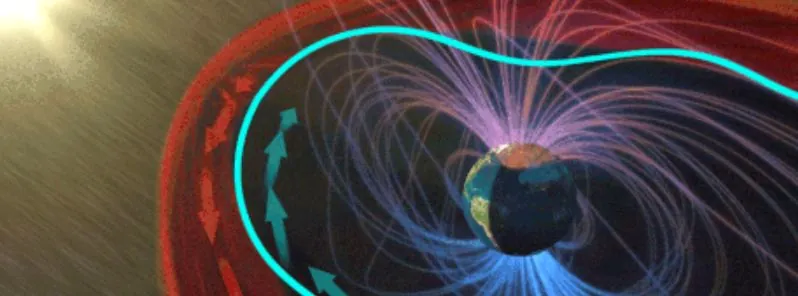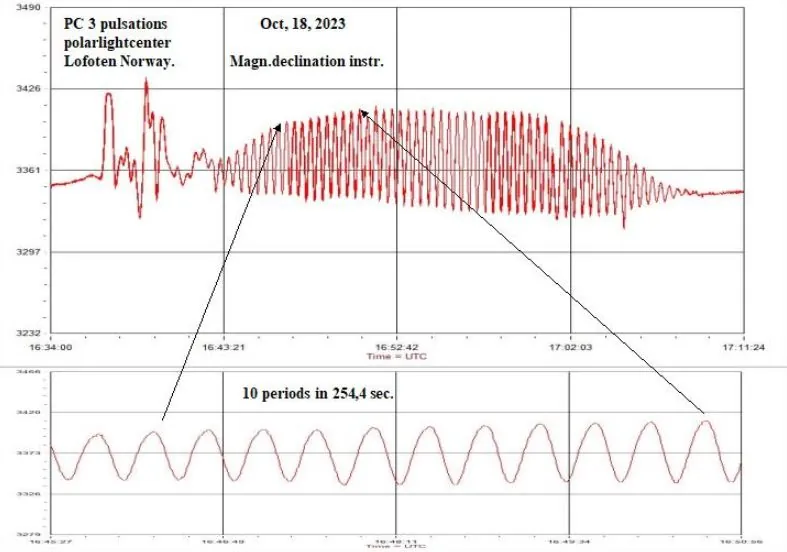Rare pure sine wave detected in Earth’s magnetic field

On October 17, Rob Stammes, a Norwegian citizen scientist, detected a rare magnetic oscillation in Earth’s magnetic field from his space weather observatory in Lofoten, Norway. The event, termed a “pulsation continuous” or Pc3 in this case, lasted for over 20 minutes and was caused by a gentle gust of solar wind. The event was unexpected as it occurred near the Solar Maximum, contrasting with the typical appearance of Pc3 waves during low geomagnetic activity in the Solar Minimum.
In Lofoten, Norway, Rob Stammes’ magnetometer displayed an unusual magnetic oscillation lasting for more than 20 minutes. This long-lasting oscillation indicated very low geomagnetic activity, as the magnetometer’s needle settled into a straight line. The magnetic field exhibited a stable, approximately 25-second oscillation, swinging back and forth by roughly 0.1 degrees, peak to peak.
Stammes, who runs a space weather observatory, has long been an observer of such phenomena, commonly referred to as “pulsation continuous” or Pc waves, SpaceWeather reports. These waves are classified into five types based on their period, and the waves Stammes detected fall into the category known as Pc3. The Pc3 classification of the waves highlighted the event’s rarity, primarily because it occurred close to the period of Solar Maximum when the magnetometer traces are usually too noisy for such delicate observations.

The cause of this magnetic tranquility was identified as a gentle gust of solar wind. The solar wind’s interaction with Earth’s magnetic field led to these Pc3 waves, essentially resembling flutters traveling down the sides of Earth’s magnetosphere, excited by the Sun’s breath. This is akin to the effect of blowing across a piece of paper and making it flutter.
While Pc3 waves are most commonly observed during Solar Minimum, when geomagnetic activity is generally low for extended periods, this event was a surprise due to its proximity to the Solar Maximum. Stammes noted that his magnetometer readings had been too noisy recently to pick up such subtle oscillations.
Although Pc3 waves can sometimes flow around Earth’s magnetic field and result in a “tearing instability,” leading to magnetic reconnection and subsequent geomagnetic storms, this did not occur on October 17. The magnetosphere returned to its state of tranquility following the oscillation.
References:
1 A Pure Sine Wave in the Magnetosphere – Space Weather – October 19, 2023
Featured image credit: NASA

‘Rare’?? Really? And just how MANY THOUSANDS of YEARS have they been ‘watching’, and recording, something like this?? Unless you have THOUSANDS OF YEARS worth of DATA, do NOT make the (FALSE) claim that this is ‘RARE’!